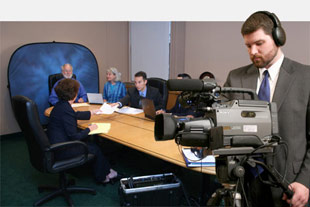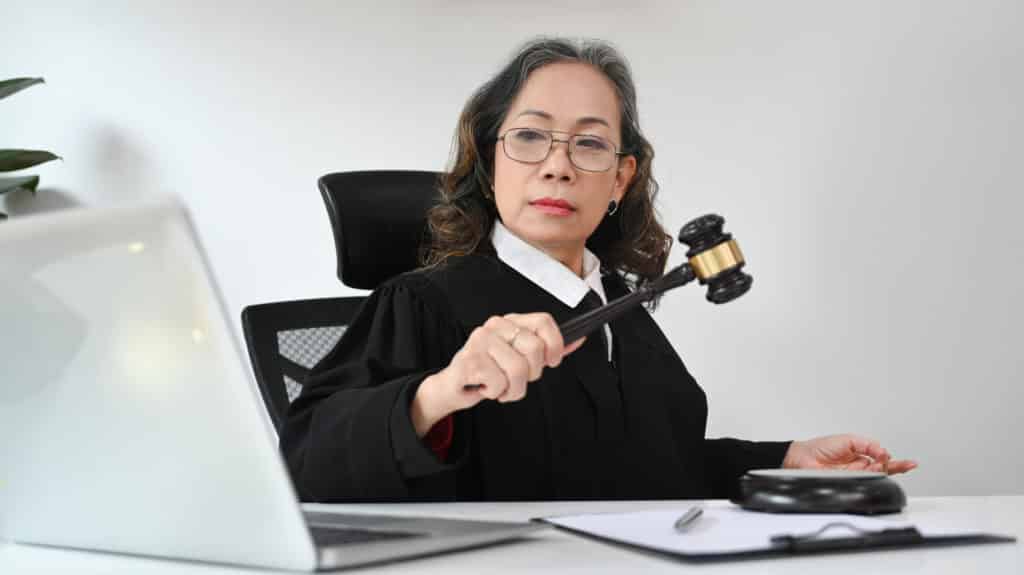How Legal Videography Enhances Courtroom Presentations and Evidence
How Legal Videography Enhances Courtroom Presentations and Evidence
Blog Article
Diving Into the Mechanisms of Legal Videography: Unveiling Its Operation in Shielding Genuine Aesthetic Statement for Judicial Procedures
In the world of judicial proceedings, the function of legal videography stands as a foundation in preserving and offering visual proof. As technology proceeds to advancement, the devices behind legal videography have actually become significantly elaborate, supplying a vital layer of authenticity to statements recorded on video.
Historic Evolution of Lawful Videography
Analyzing the historic development of legal videography exposes a significant change in the recording and presentation of visual proof within the lawful landscape. In the past, lawful proceedings heavily counted on written transcripts and photos to record occasions and give proof. With the advent of video innovation, the lawful sector observed a standard shift in how aesthetic testament was captured and presented.
The evolution of legal videography can be traced back to the late 20th century when developments in video clip recording devices made it extra accessible for use in courtrooms. This technological development not only enhanced the accuracy and reliability of visual evidence yet additionally revolutionized the way cases existed to courts and courts (Legal Videography). Attorneys began to recognize the persuasive power of video clip recordings in sharing feelings, subtleties, and non-verbal hints that written pictures or records alone might not capture effectively

Modern Technology Innovations in Video Clip Documents
What key technical advancements have changed video documents in the legal area? The legal area has seen considerable improvements in video documents technology that have actually enhanced the credibility and reliability of visual proof in judicial proceedings.
Additionally, advancements in video encryption and watermarking innovations have actually reinforced the protection and tamper-proof nature of video evidence, securing it against unauthorized modifications or meddling. The introduction of cloud storage space remedies and remote accessibility capabilities has streamlined the storage, retrieval, and sharing of video proof, promoting smooth cooperation amongst lawful specialists and ensuring efficient accessibility to essential visual testaments when required. These technological advancements in video documentation have actually most certainly revolutionized the legal field, enhancing the accuracy, reliability, and admissibility of visual evidence in judicial proceedings.
Duty of Lawful Videographers in Court Room Setups
The advancement of video documentation technology in the lawful field has necessitated an essential function for legal videographers in court setups, ensuring the honesty and integrity of visual testaments provided during judicial process. Legal videographers play a basic function in capturing and maintaining precise aesthetic proof that can be pivotal in court instances. Their obligation includes establishing up equipment, videotaping procedures, and producing top notch videos that properly reflect the occasions in the courtroom.
In court room settings, lawful videographers must follow strict standards and standards to preserve the credibility of the visual document. They must possess an eager eye for detail and a complete understanding of lawful treatments to make sure that the video footage they record is a true depiction of the events that a fantastic read transpired. In addition, legal videographers commonly work very closely with legal teams to make certain that the video evidence straightens with the case's requirements and can be successfully presented in court to support the legal debates being made. Overall, the function of legal videographers in court room setups is important in maintaining the concepts of justice and ensuring the openness of legal proceedings.

Ensuring Admissibility and Stability of Video Evidence
To keep useful reference the reliability of aesthetic proof presented in legal procedures, making certain the admissibility and integrity of video clip proof is a critical obligation for legal videographers. Admissibility describes the approval of evidence by the court, and for video proof to be admissible, it needs to meet specific requirements. Lawful videographers play an essential function in making sure that the video clips they record adhere to the guidelines of proof, such as authenticity, dependability, and significance.
Honesty of video clip proof entails keeping the originality and accuracy of the video footage from the time it is tape-recorded up until it exists in court. This includes securely storing the video clip documents, recording the chain of custody, and preventing any meddling or changes. Lawful videographers need to stick to stringent protocols to guarantee the integrity of the video clip proof and avoid any challenges to its credibility.
Future Trends in Legal Videography
Offered the boosting reliance on technology in lawful procedures, legal videographers are poised to welcome ingenious developments shaping the future of aesthetic statement capture and presentation. Among the famous patterns coming up is the assimilation of online reality (VIRTUAL REALITY) and increased truth (AR) technologies right into lawful videography. These modern technologies have the possible to reinvent how aesthetic proof is offered in courts, permitting courts and judges to immerse themselves in the scene of the crime or case.
Additionally, making use of man-made intelligence (AI) formulas for video analysis is anticipated to enhance the process of assessing and examining large quantities of video footage. AI can aid in determining essential moments, anomalies, and patterns within video clips, enhancing the performance of legal investigations.

Conclusion
To conclude, legal videography has actually played an important duty in supplying genuine visual proof for judicial proceedings. With technical improvements and the proficiency of lawful videographers, the integrity and admissibility of video proof are ensured in court setups. As legal videography remains to progress, it will certainly be vital to support criteria that maintain the precision and dependability of visual testament for the future of legal proceedings.
Analyzing the historic development of legal videography exposes a substantial transformation in the catching and presentation of aesthetic proof within the lawful landscape.The evolution of video paperwork modern technology in the lawful field has required an essential duty for lawful videographers in court room settings, making certain the honesty and reliability of visual testimonies provided during judicial procedures. In addition, lawful videographers often work closely with legal teams to ensure that the video evidence aligns with the case's requirements and can be efficiently presented click here now in court to support the legal arguments being made.To maintain the trustworthiness of visual evidence presented in legal proceedings, ensuring the admissibility and honesty of video clip proof is an important duty for lawful videographers. As legal videography continues to evolve, it will certainly be essential to copyright criteria that keep the accuracy and reliability of visual testament for the future of lawful procedures.
Report this page